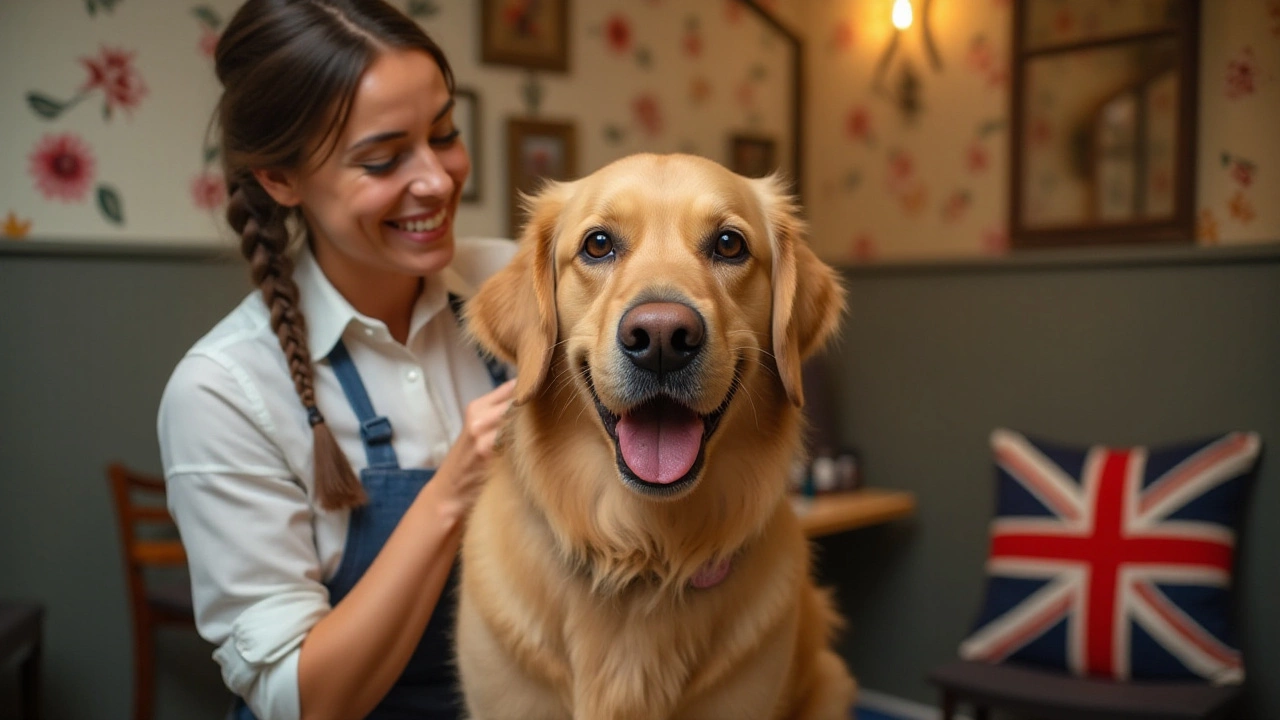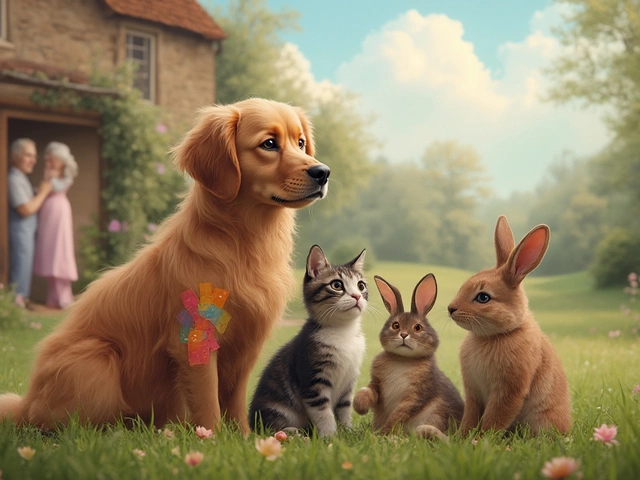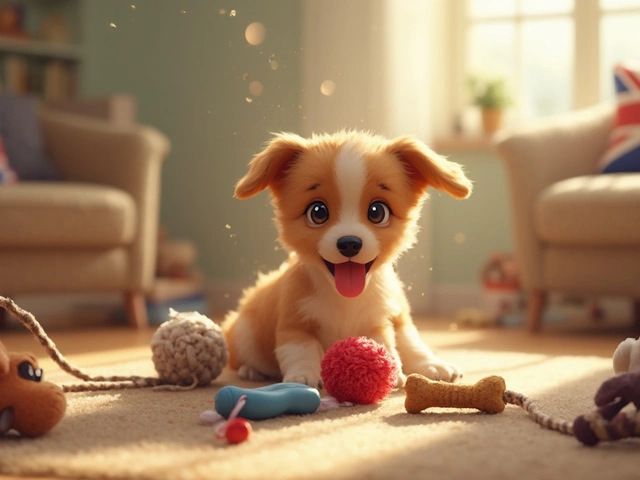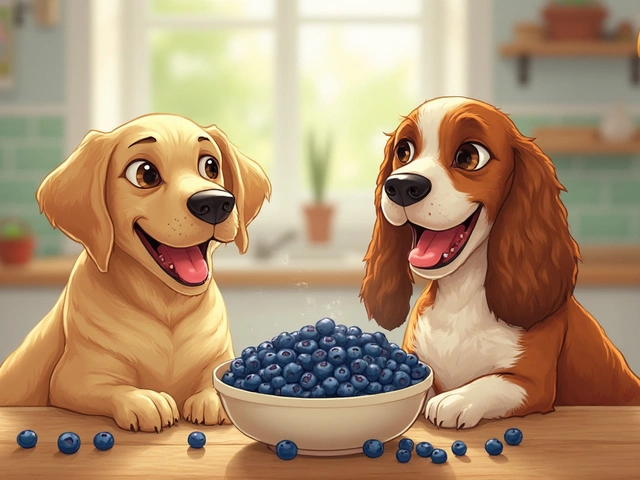When it comes to grooming, many dog owners might notice their pets exhibiting tear-streaked fur or watery eyes, sparking concerns about emotional distress. Unlike humans, dogs don't shed tears due to sadness or frustration. Their tear production typically relates to physiological factors or reactions to the environment, such as a speck of dust.
Dogs communicate their comfort or discomfort through body language and vocalizations. Identifying cues like trembling, mouthing, or even excessive yawning can help you understand if your four-legged friend is not having the best time during a session. By recognizing these signs, you can work towards making grooming a more pleasant experience for them.
- Understanding Dog Emotions
- Physiological Reasons for Tear Production
- Recognizing Signs of Stress
- Tips for Reducing Grooming Anxiety
- Creating a Positive Grooming Experience
Understanding Dog Emotions
Dogs have been our loyal companions for centuries, forming bonds so deep that they almost appear human-like in their emotions. However, while we might project our own feelings onto them, it's key to recognize that canine emotions, while profound, are expressed differently. Dogs, for instance, do not cry tears of emotion in the same way humans do. Instead, their emotions are showcased through body language, vocalizations, and behaviors. A wagging tail, for instance, can signal excitement or agitation depending on its speed and how it's positioned. Recognizing these signs means getting a closer glimpse into what our furry friends truly feel and need, whether they're around other pets or during grooming sessions.
The idea that a dog can feel complex emotions is supported by numerous studies showing their deep social bonds and cognitive abilities. For example, some dogs may display signs similar to jealousy when their owners pay attention to other animals. This doesn't necessarily mean they're experiencing jealousy in the human sense, but they are responding to social cues and changes in their environment with behaviors that we interpret as emotional. A stress response might be noticeable in a grooming situation where unfamiliar sounds and sensations can make even the most placid pup uneasy. Grooming brings its own set of challenges that can trigger stress or anxiety, often mistaken for fearfulness or sadness. So, it's not unusual to see a dog become visibly more relaxed when familiar faces and routines are associated with grooming.
A deeper look into canine facial recognition studies reveals how much dogs' bonds with humans affect their day-to-day emotions. From recognizing a friendly face to reacting negatively to someone unknown or who has previously caused them discomfort, dogs have a nuanced understanding of social dynamics. Groomers who develop a rapport with their animal clients often report fewer instances of fear-based behavior. "Dogs, through thousands of years of cohabitation with humans, have evolved to read us better than any other species," notes Dr. John Bradshaw, author of 'Dog Sense'. This statement underscores the need for groomers and pet owners alike to understand these signals, ensuring each grooming session is viewed as positive and trust-building.
Beyond the face-to-face interactions, dog's use scent cues which are another layer of emotional insight. Whether they snuggle up to you for comfort or back away in the presence of looming anxiety, their sense of smell is guiding their understanding and reactions. This is especially vivid in multi-pet households, where a stressed animal can trigger similar behaviors in others. Tailoring the grooming experience to reduce such stressors can enhance these positive interactions, paving the way for a happier grooming routine. In any case, pet owners should stay perceptive, adjusting their approaches based on what their dogs communicate, albeit silently, with body and behavior.
Physiological Reasons for Tear Production
Dogs' tear production can be surprisingly complex and, often, it's more about biology than emotion. One of the primary reasons dogs have watery eyes during grooming is due to irritation. The presence of dust, hair, or shampoo residue can lead to an overproduction of tears. This is the body's natural way of flushing out foreign particles that might cause discomfort. Just like a reflex, the tear ducts spring into action to rid the irritants, ensuring the eye is healthy and free from potential harm.
Watery eyes can also indicate allergies - an often overlooked factor. Dogs, much like humans, can react to allergens in their environment. This could be pollen, certain grooming products, or even ingredients in their food. Their bodies react by producing more tears as the immune system tries to manage these irritants. It's an entirely normal response, but one that can be minimized by identifying and limiting exposure to specific allergens. A switch in shampoos, or a change in location during grooming, can sometimes mitigate this tearful symptom.
Another physiological reason for tear production is breed-related anatomical structures. Breeds like Bulldogs and Pugs, known for their characteristic facial folds, commonly experience tear overflow due to their short snouts. This leads to issues with tear drainage, as the tears have nowhere to go but out, and down those adorable, but sometimes susceptible, snouts. Maintaining a clean face and choosing grooming techniques that account for their unique structure can help manage tear production in these cases. Consistent cleaning helps prevent tear staining, which can develop from the minerals found in tears drying on the coat.
"Dogs don't express tears to convey their state of mind like humans do. It's mostly an automatic response to physical stimuli, much like sneezes or scratching," says Dr. James Olson, a well-regarded veterinarian.
Additionally, it's crucial to consider the impact of blocked tear ducts on tear production. This condition, known as epiphora, often results in those tell-tale tear stains on the fur, a common sight in many dog breeds. A vet can determine if your dog is experiencing such blockage through a simple check-up, often suggesting treatments or lifestyle changes to alleviate the condition. Addressing such underlying health issues is key to managing excessive tearing in longer-haired breeds where accumulated moisture can lead to skin problems.
Grooming tips can significantly help in reducing these physiological tear productions. Make sure to use products free from known irritants and allergens, like scented shampoos or conditioners. Pay attention to your dog's behavior during grooming—excessive blinking might be a sign that your pet isn't handling the situation comfortably. Always introduce grooming routines with care, ensuring they're gentle and enjoyable. By doing so, you ensure not only a happy, stress-free grooming experience but also promote the overall well-being of your furry companion.
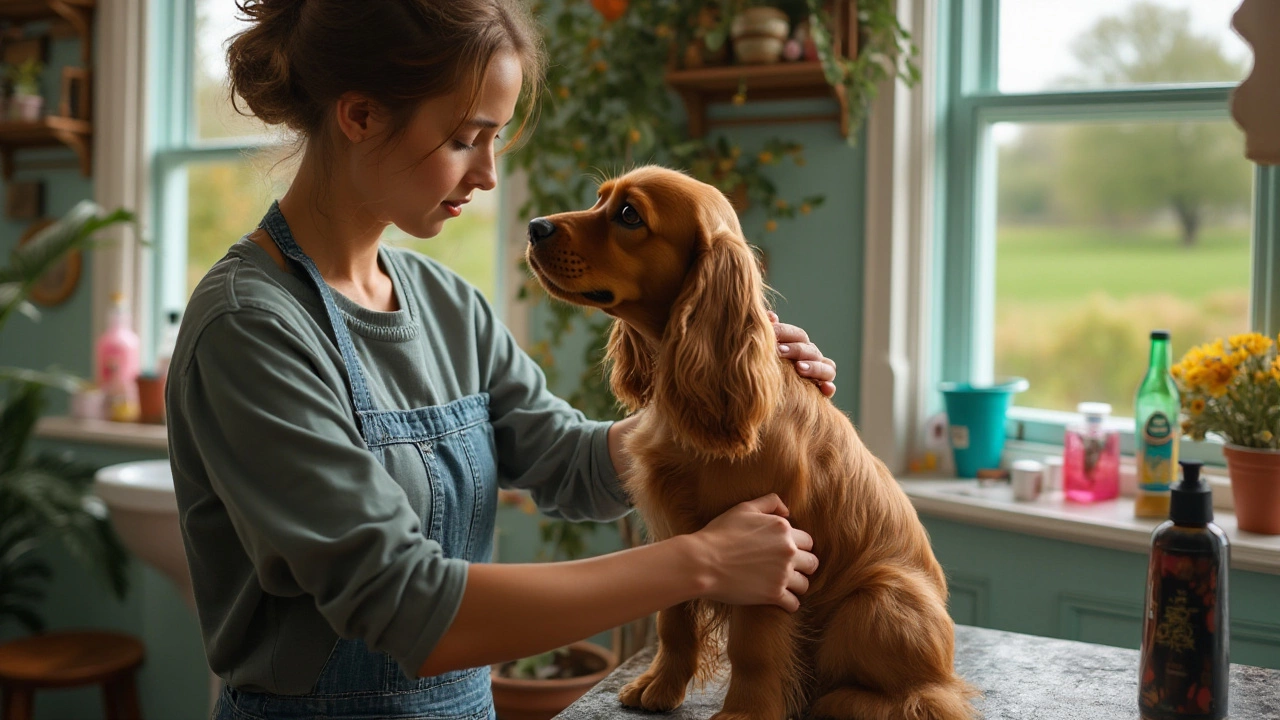
Recognizing Signs of Stress
Grooming can sometimes be a daunting experience for our furry companions, leading them to exhibit signs of stress. Being attuned to these signals is crucial for ensuring a more comfortable session. One prevalent indicator is body tension. You might notice your dog's muscles stiffening or their body becoming unusually rigid when they are uncomfortable. A stiff tail or one that is tucked between their legs can also be a classic sign of anxiety and distress. Heavy panting in a dog who hasn't been playing or running is another telltale sign that they may be experiencing stress during grooming.
Vocalizations are another way your dog may communicate discomfort or stress. Whining, barking, or even growling during a grooming session can indicate that something is awry. While some dogs naturally have a chatty disposition, a sudden increase in vocal behavior may point towards anxiety. Pay attention to trembling or shaking as well. It's not uncommon for a dog to shiver if they are apprehensive about being groomed or being in a new or uncomfortable situation. Excessive yawning, alongside licking of lips, might appear as peculiar behaviors, but they can be signs of stress too.
"Understanding these signals plays a pivotal role in decreasing the anxiety that a pet feels during grooming," says Dr. Sarah Harmon, a veterinarian known for her insights into animal behaviors.Frequent scratching or pawing at their face might indicate discomfort with the products being used. It's essential to ensure that there are no allergic reactions at play. In some cases, dogs might try to escape or continuously turn their head away from the brush or clippers. This avoidance behavior is a strong indication that they're not enjoying the experience. Another common sign is drooling, which can happen more frequently than usual if your dog is stressed or nervous.
Monitoring your dog's overall grooming behavior is beneficial as well. If they seem more withdrawn or overly active, it may be a cause for concern. Creating a comfortable and stress-free environment is key. Always be patient and give your dog frequent breaks, especially if you observe signs of stress. Some pet owners find that soothing music or gentle petting can alleviate tension. Introducing grooming tools slowly and letting your dog sniff them can help ease their anxiety, making the experience more pleasant for everyone involved.
Tips for Reducing Grooming Anxiety
When your beloved pet appears anxious during grooming sessions, it's key to recognize that there are various strategies you can deploy to soothe their nerves and make the experience more enjoyable. For starters, ensuring that grooming routines mimic a calm, everyday activity can greatly help. Begin by associating grooming tools with positivity. You might let your dog sniff and explore these tools during a non-grooming setting before they've laid down their infamous judgment. Yes, turning this introduction into a fun game while offering praise and treats can make a world of difference.
Moreover, starting your grooming routine with a gentle massage can relax your dog significantly, almost creating a zen atmosphere before diving into the actual grooming process. The magic of touch shouldn’t be underrated as it builds trust, moment by moment. Short preliminary grooming sessions are also beneficial if your dog is unseasoned in the art of taming their mane. Gradually increasing the time spent on grooming can ensure they don't feel overwhelmed. A helpful tip is choosing a time when your dog is naturally more relaxed, often after playtime or exercise, when the world seems far less daunting to them.
Furthermore, implementing desensitization techniques can help them feel better at ease. This involves gently exposing your dog to the sounds or sensations of grooming over time. Tools like clippers and brushes make unique noises, which, if paired gradually with rewards, transform from terror-inducing to another day in the life of your pampered canine. Some expert groomers suggest practicing simple sessions on a daily basis, even if it means just combing or lightly brushing, as a way to combat the unknown.
Creating a serene environment goes beyond just the methods; it includes the setting as well. Ensuring that your grooming area is spacious, comfortable, and void of any harsh stimuli makes the process a lot more pleasant. Soft music, warm settings, and a familiar scent can be calming to their heightened senses. Remarkably, paying attention to your attitude during grooming also counts. Maintaining your calm helps them read the room correctly: if you're stressed or impatient, chances are they will be too.
Pet care is not only about physical prowess or technique. In fact, a lot boils down to emotional bonding and making our furry family members feel secure. According to Dr. Karen Becker, a renowned veterinarian:
"Involving your dog in the grooming process in a positive manner is as important as taking them for their daily walk."
Offering treats or so-called "training chews" can be especially effective in reinforcing good behavior and helping your dog associate grooming with reward. Why not make it a session to look forward to? Building these layered rewards ingrains good behavioral patterns that persist, making grooming not a feared chore but a cherished connection moment.
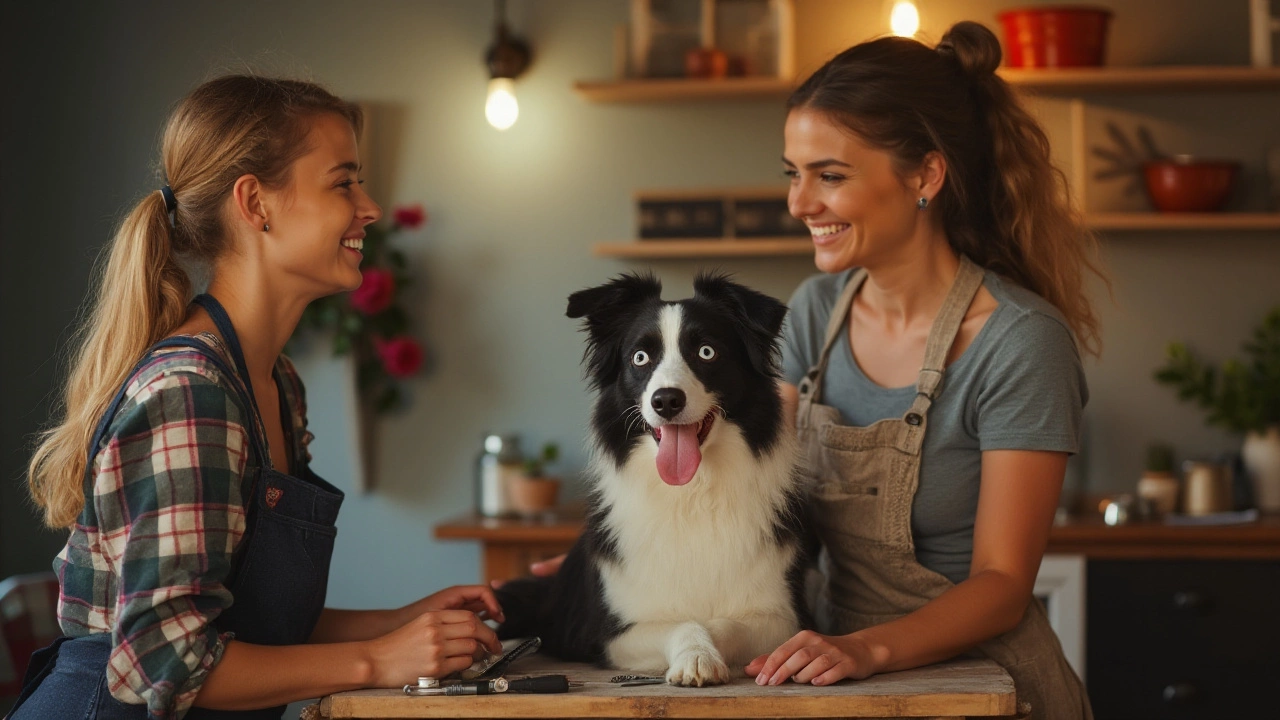
Creating a Positive Grooming Experience
Crafting a positive grooming experience for your dog is about more than just a good haircut—it's about building trust and making the process enjoyable. Dogs, much like humans, thrive when they feel safe and secure. To achieve this, begin at an early age if possible. Introducing dog grooming practices early on can acclimate your pet to the sensations and sounds that typically accompany these sessions. This doesn't only make them more comfortable but also helps in reducing stress as they grow familiar with the routine.
Consistent and gentle touch plays a significant role in developing a bond of trust. Get your pup used to being handled by gently stroking their paws, ears, and tail outside of grooming times. Such practices can make them less sensitive when these areas are handled during grooming. Incorporating these into your day-to-day interactions with your dog allows them to associate handling with love and comfort, not just with grooming.
Pet care experts emphasize the importance of patience and pacing. Mindful grooming means respecting your dog's limits. It's crucial to pay attention to their cues and adjust the session accordingly. If your dog shows signs of anxiety or distress, it may be time to take a break or try a different approach. "Speaking your dog’s language is key," explains Dr. Samuel Meitner, a renowned veterinarian.
"Understanding and respecting their comfort zones can transform grooming from a necessary chore into a bonding opportunity."
Creating a comfortable environment also aids immensely in making the grooming experience positive. Ensure the space is quiet and free from distractions to help your dog's behavior remain calm. You might consider playing some soft music in the background or using aromatherapy products designed for pets to help soothe them. Dogs have an incredible sense of smell, so fragrances such as lavender can be calming.
Tools and supplies are another vital aspect. Make sure the tools you use are appropriate for your dog's coat and size. Many pet supply stores offer options ranging from ergonomic brushes to silent clippers, designed specifically to make grooming more comfortable for pets. Always keep groomer's rewards, like small treats, handy. Rewarding your dog generously throughout the session can associate the grooming process with positive reinforcements. This simple approach can make a world of difference, turning what might initially be a daunting task into a bonding activity between you and your furry friend.

